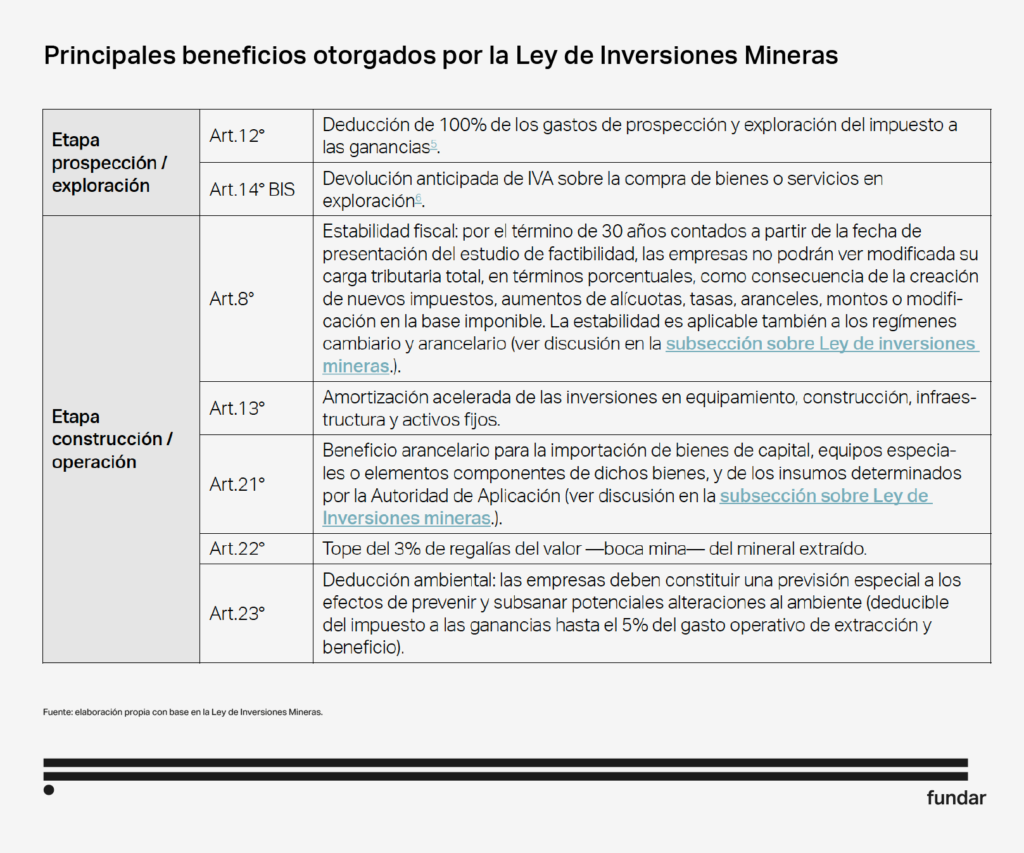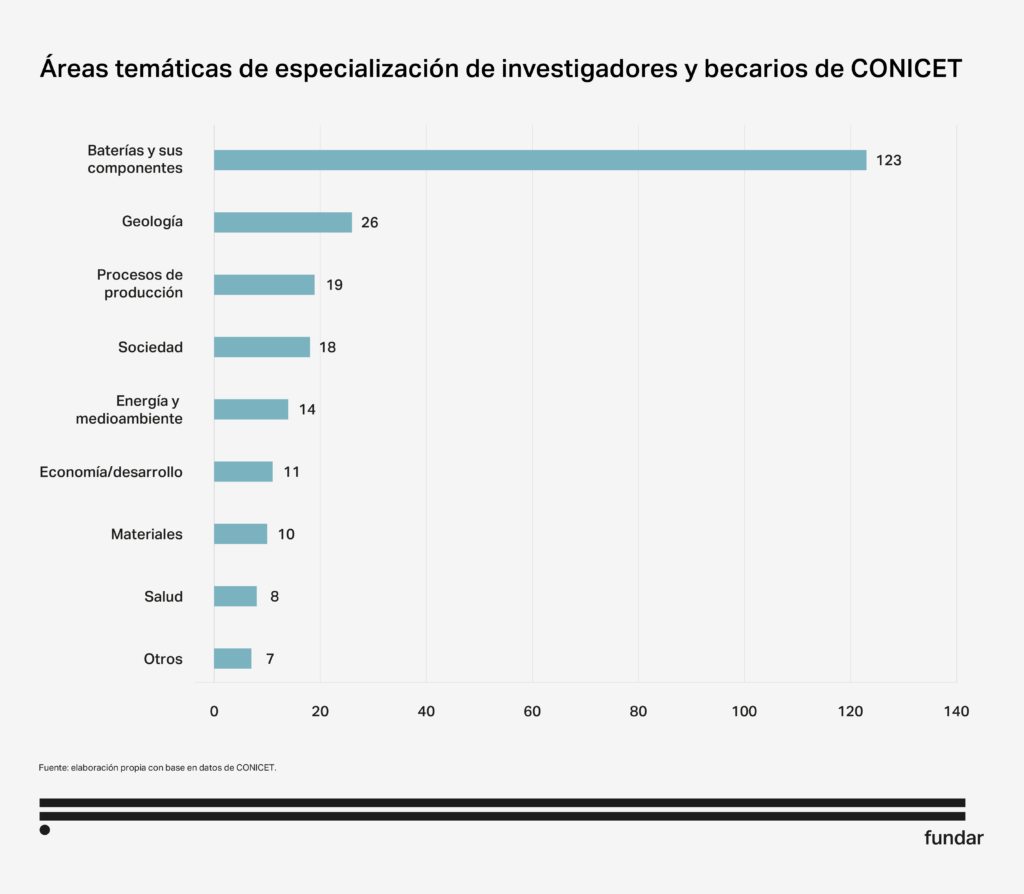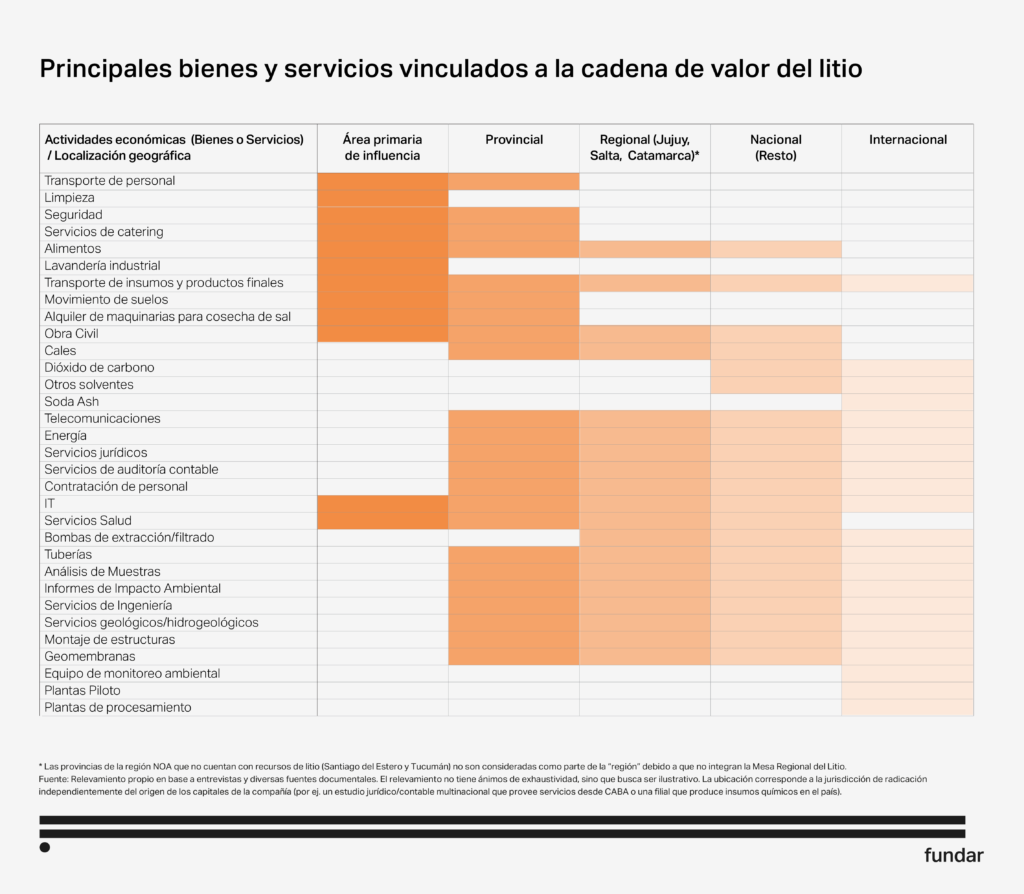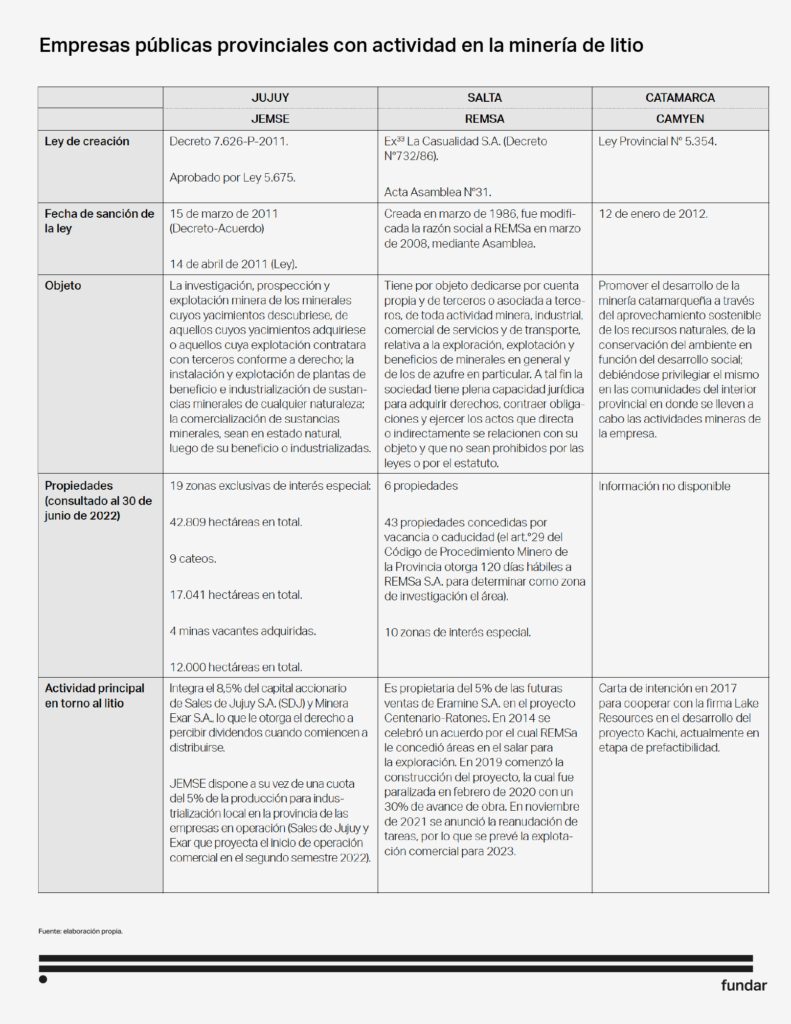Argentina has 22% of global lithium resources. Can natural resources provide a platform for economic development? The experience of countries whose development is linked to their natural resources offers an optimistic view. The difficulties in promoting virtuous economic processes can be traced back to their “governance” mechanisms.
Our country has a federal regime of governance of mining activity. This implies that the original domain of natural resources belongs to the provinces. Thus, this federal scheme poses coordination challenges for the design of a strategic vision that translates into public policies;
The context of energy transition is leading to an increase in demand for lithium ore. Why? It is a necessary input for the production of batteries used in electric vehicles and renewable energy storage systems. Reflecting on the challenges of the federal framework for the governance of mining is essential to propose policies that favour the development of productive and technological capacities based on lithium.
The federal lithium governance system
A feature of the mining governance regime in Argentina is its federal character. The regime is configured as a multi-level system. Certain competencies are the exclusive power of the provinces by their dominion over natural resources. These provisions make the provinces the “owners” of lithium;
However, this does not mean that the provinces have absolute autonomy to manage resources. Their regulations and decisions also depend on national government definitions that condition what the provinces can do. A key point that emerges from this discussion is that the design of productive and technological development policies requires a high level of coordination between jurisdictions.
National regulatory framework
The mining regulatory system at the federal level is based on three pillars: the National Constitution, the Mining Code and the Mining Investment Laws. These regulations are complemented by general environmental and tax regulations that interact with the provincial level. The rules governing the mining regulatory system at the federal level form a liberal and “free entry” investment regime, which is crucial for the functioning of the multilevel governance of lithium.
Mining activity in Argentina is governed by the National Constitution. In Article 124, the 1994 Constitution reaffirmed the original dominion of the provinces over the natural resources existing in their territories. In this constitutional reform, the provinces delegated to the National Congress the power to dictate the substantive codes, such as the National Mining Code. It follows from the provisions of the National Constitution and the Mining Code that the provincial administrations are the competent authorities to grant mining concessions.
Complementary to the Code, the main instrument for the promotion of mining activity is the Mining Investment Law. This law seeks to promote investment by reducing entrepreneurial risk in its early stages and guaranteeing tax stability for 30 years.

Provincial regulatory framework
The federal regime consolidated by the 1994 constitutional reform establishes that each province is the owner of the minerals under its jurisdiction and is responsible for the procedure for granting mining rights. The autonomy of each province generated great heterogeneity, which increased transaction costs for companies operating in the sector.
When the provincial state grants a mining concession to a third party, it retains original ownership. The concession may be revoked if environmental conservation conditions imposed by the Mining Code are not met;
In terms of taxation, the main source of tax revenue for the provinces from mining activity in their territories is royalties. The current configuration of the tax system and the balance of the total tax burden is largely concentrated in the national treasury. This fact limits the provinces’ possibilities of using royalty revenues to incentivise local development policies.
The federal regime thus configures a multilevel governance scheme. The provinces exercise their “ownership” rights over the resource within the framework of a set of rules defined by the national government. It is a system in which exclusive competencies coexist with others that are concurrent between the different levels of government. At the same time, compared to the provinces, the national government has more instruments and economic resources for the implementation of policies aimed at the development of infrastructure and productive and technological capacities.

Analysis of the productive and technological development policies in the lithium industry.
A productive and technological development policy refers to a set of instruments aimed at promoting increased productivity and more dynamic economic growth through the creation and diffusion of local capacities and infrastructure.

Domestic policies
Mining Investment Law
The regime for the promotion of mining activity is liberal and open-access. In this sense, its design limits the instruments that can be used to promote the development of productive and technological capacities. However, some instruments can provide leeway to grant benefits or exemptions on condition that these objectives are met.
For example, the presentation of the feasibility study is used as an opportunity to articulate policies in favour of a greater impact on the local and/or national productive structure, from the moment a mining project is established. Another instrument of the law that is subject to regulation by the enforcement authority is the definition of the positions in the national nomenclature that can benefit from import tariff exemptions.
However, it emerged from the interviews that there are several obstacles to these policies producing the expected results. At the intersection of both processes, the differential objectives of the national and provincial authorities come into tension. While the former contemplates the objectives of developing productive and technological capacities in the national productive fabric, the latter tends to favour the advancement of investment projects and productive activities in the province’s own territory.
Supplier Development Programme (PRODEPRO)
The programme most aligned to develop productive capacities around mining is the Supplier Development Programme, managed by the Ministry of Productive Development.

The largest beneficiary of this type of instrument was the renewable energy sector, which received 26% of the funds, followed by health with 20.9%. Only 3 lithium mining supplier companies participated in PRODEPRO, specialising in the provision of equipment and spare parts, transport engineering or process engineering. The beneficiary companies of PRODEPRO in 2020-2021 are located in 10 provinces. No company in Jujuy, Salta and Catamarca received any type of benefit, neither in mining nor in other activities.
As it is a national programme, the provinces are not actively involved in its implementation. When they do, their intervention is focused on specific cases and seeks to localise productive activities in the province.
Instruments to support science, technology and innovation: CONICET and the R&D&I Agency
Support for activities to promote science, technology and innovation related to lithium is mainly channelled through the CONICET and the R&D&I Agency. In the first case, the main policy instrument is the funding of researchers’ salaries and the stipend for human resources training. From the analysis of the CONICET database, 236 researchers and fellows of the institution have been identified who have research projects linked to lithium or have published studies related to the resource in the last 10 years.
From a thematic point of view, CONICET staff is mainly oriented towards activities that use lithium as an input for the production of goods or in some productive process. Research on topics directly related to the exploitation of the resource has significantly less weight.

The geographical distribution of researchers and fellows working on lithium-related topics shows a strong concentration in the districts of Buenos Aires (25%), Córdoba (21%) and the Autonomous City of Buenos Aires (15%). In the NOA provinces, with abundant lithium resources, only 17% of researchers and scholarship holders are located: in Jujuy (8%), Catamarca (5%), and Salta (4%).

The R&D&I Agency is the institution that finances research, development and innovation projects involving members of the scientific and technological system and the private sector. Three funding instruments have been identified: FONTAR, PICT and FONARSEC. Between 2012 and 2021, funds totalling USD 5.7 million have been allocated.

The data on the financing of activities to promote science, technology and innovation related to lithium reflect a certain divorce between the productive reality and the orientation of scientific-technological activity towards issues related to batteries and their components.
Provincial policies
Local procurement policies
The main instrument used so far by the NOA provinces to promote productive development in lithium mining has been the “buy local” policy (PCL). This is an instrument that conditions access to the natural resource or the maintenance of concessions on compliance with standards that benefit the project’s area of influence. In this way, PCLs seek to promote the creation of local productive links, preventing mining projects from becoming enclaves.

Provincial public companies
Provincial participation in mining activity has also been channelled through state-owned companies. These are organisations that have some form of majority control by the state. Thus, they have a legal structure that can vary from state-owned companies to joint stock companies with mixed or 100% state participation. It is this legal configuration that allows, according to the Code, the State to participate in mining activity in any of its forms.
In the three NOA provinces with lithium resources there are provincial companies that were created between 2008 and 2012: JEMSE (Jujuy), REMSa (Salta) and CAMYEN (Catamarca);

Interinstitutional instruments
Centre for Research and Development in Advanced Materials and Energy Storage of Jujuy (CIDMEJu)
The CIDMEJu is an inter-institutional institution of a tripartite nature, made up of CONICET, the National University of Jujuy and the province of Jujuy. Its work is organised along two main lines. On the one hand, it seeks new efficient and sustainable technologies for the extraction and processing of the lithium resource. On the other hand, it develops applications that add value to the primary mining resource.
INTI Regional Northwestern Argentina
One of the strengths of INTI is its ability to make the provision of services to mining companies viable. In this way, it favours the process of adaptation of small and inexperienced companies to the safety and quality standards required by the activity.
Challenges for the design of productive and technological development policies
In Argentina’s federal scheme, the provinces have control over natural resources. However, they do not control policy instruments that could be key to their development, such as science and technology policy, which is in the hands of the federal government. Nor do the provinces have the resources to implement productive and technological development policies.
In our country, more than three-quarters of the revenue associated with lithium projects is explained by national taxes. As a consequence of this tax structure, the amount collected by the provinces is around 15% of the total revenue.

Concerning provincial royalties, their application to the creation of productive and technological capacities is limited. Implementation funds are mainly used for general infrastructure works and the development of basic services.

Within this framework, the instruments for productive and technological development depend on the national government. This is where public resources are concentrated. However, the effectiveness of these instruments requires greater coordination between levels of government;
In turn, the design of productive and technological development policies does not respond to a strategic approach to lithium. There is a strong dissociation between upstream and downstream capacity building in production; between instruments aimed at promoting productive capacities and technological capacities, and between the actions developed by the different levels of government..
A strategic vision on lithium
A strategic vision for lithium requires spaces for diagnosis and proposals that integrate the different levels of government and stakeholders. These areas must be institutionalised.
The strategy of building productive capacities supported by provincial companies has its limitations. The opportunity to use a public or mixed company to create technological, operational and organisational capacities in lithium exploration or exploitation appears more clearly with the irruption of YPF. Relevant participation in the production of lithium compounds would generate economies of scale and revenues for the financing and development of other activities along the chain.
The system of local procurement policies is a scheme aimed at generating employment mainly linked to activities of low technological complexity. In other words, it is not a productive development policy that promotes a diversification of the productive matrix. To this end, it would be necessary to generate policy programmes aimed at creating these conditions.
The implementation of more effective productive and technological development policies around lithium requires a review of the governance of mining activity in general. Coordination problems relate to the way competencies are distributed between the provinces and the national government, along with the incentives for public and private actors. Therefore, a review of the regulatory framework for the design of productive and technological policies must take into account the reform of the tax system and the reform of the Mining Investment Law.

